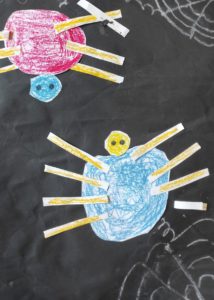
My child complains of tummy pain. When should I see a doctor?
About 1 in 5 children experience tummy (abdominal) pain at some point in their life. While many cases are caused by gastroenteritis or constipation, some are due to surgical conditions, for example, appendicitis, or intussusception, and some do not have a cause (functional abdominal pain). Warning signs that indicate a specialist review is required are: 1) When your child is experiencing persistent pain despite coaxing and paracetamol, 2) Vomitus turning greenish in colour, 3) Not tolerating food or fluids and becoming lethargic.
What is appendicitis?
Appendicitis is an infection of the appendix (an organ located at the first part of the colon). It results in persistent abdominal pain and is associated with vomiting and fever. There is a risk of perforation, resulting in generalised infection and death.
How is appendicitis diagnosed?
Diagnosis is a clinical one. When the patient is stable, the history of the pain and associated symptoms is taken. I perform a thorough clinical examination, to exclude surgical causes of the abdominal pain. The diagnosis is reached most of the time with adjuncts such as blood and urine tests. Sometimes an ultrasound is needed to confirm the diagnosis. A computed tomography (CT) scan is rarely required to diagnose the complications of appendicitis in children.
What is the treatment?
Treatment is surgical removal of the appendix. Antibiotics can be tried but at 5 year follow up, 45% of patients had recurrent appendicitis (1). When the symptoms have been present for more than a week, I discuss with the patient and family options of surgery, vis-a-vis a staged treatment with antibiotics first, then a laparoscopic appendicectomy in 12 weeks’ time (2).
I recommend a laparoscopic appendicectomy as the gold standard treatment. The abdomen is entered through keyhole incisions, which are hidden within the umbilicus. This allows a complete view of the abdomen to exclude all surgical causes of the tummy pain. When there is appendicitis, the appendix is dissected free and removed. When there is pus or perforation, a washout is performed through the key hole. When complicated, the incision may need to be extended to remove the appendix safely. After general anaesthesia, your child will be monitored in the ward.
How is the post-operative recovery?
In an uncomplicated appendectomy, your child can eat and drink after surgery. He/she can shower normally. It is important to avoid physical exercise and swimming for 2 weeks to allow the wound to have good healing and strength. Please contact us if there is wound swelling, redness or discharge, suggestive of infection.
What is the cost of surgery?
I take reference from the Ministry of Health, Singapore, Fee Guidelines(3). The total hospitalization fee is claimable by Hospitalization Insurance, Medisave and Child Development Account. The Medisave limit is up to $550 for the first two days of admission and $400 per day from the third day onwards for daily hospital charges. The Medisave limit claimable for the surgery is $2,150.
References:
(1) Patkova B, Svenningsson A, Almström M, et al. Nonoperative Treatment Versus Appendectomy for Acute Nonperforated Appendicitis in Children: Five-year Follow Up of a Randomized Controlled Pilot Trial. Ann Surg. 2020 Jun;271(6):1030–5.
(2) Farr BJ, Carey DE, Mooney DP. When to take it out? Optimal timing of interval appendectomy in 500 consecutive children. J Pediatr Surg. 2020 Nov 13;S0022-3468(20)30834-4.
(3) https://www.moh.gov.sg/cost-financing/fee-benchmarks-and-bill-amount-information
Share if you like this post
If you have other enquiries on children’s surgical conditions, feel free to contact us
© Copyright- 2020 Childsurgery.sg
All Rights Reserved